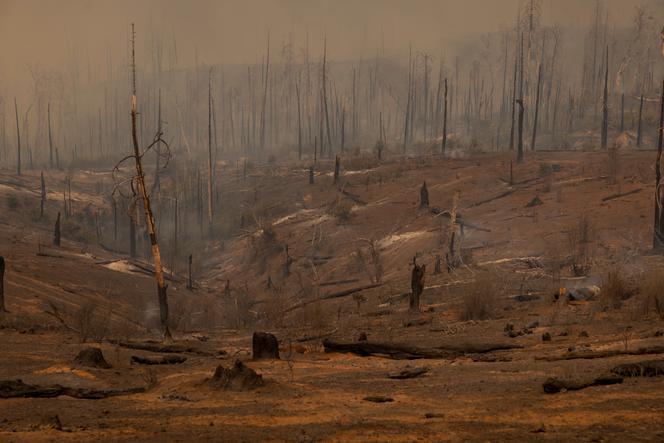


Paleontologists have been wrestling with a controversy for decades. Was the mass extinction of megafauna (large mammals) at the end of the Pleistocene geological epoch 13,000 years ago caused by human activity or climate change? At that time, almost 70% of megafauna species disappeared. To this thorny question, a study published Thursday, August 17 in Science offers a mixed answer.
As the authors of the article note, California started experiencing rising temperatures by 17,000 BC, resulting in drought and aridity. In this unstable climate, however, human activity led to the emergence of numerous forest fires that profoundly disrupted the local ecosystem. To conduct this research, the remains of 172 specimens of eight different species, ranging from the ancient bison to giant sloths, were studied at the La Brea Tar Pits in Southern California.
Within just a few millennia, Southern California’s climate underwent significant variations. Between 17,000 BC and 12,900 BC, surface water temperatures rose by 7-8°C, while ambient air temperatures rose by 5.6°C between 14,000 BC and 13,000 BC. This led to a drought in the region, which researchers attribute to an increase in evapotranspiration, the process by which water moves from the soil through plants and into the atmosphere.
These upheavals profoundly altered the ecosystem. The oaks and junipers that once populated the region gave way to a drier, grassier landscape. In short, wildlife adapted to this new ecology. Researchers noted a slight increase in the presence of pines and bushes, more resistant to arid temperatures.
These climatic changes culminated in a tipping point. These fluctuations, which had been gradual up until then, increased abruptly between 13,200 BC and 12,900 BC. Fires intensified to such an extent that an accumulation of charcoal, collected from sediments, was observed. Its presence increased 30-fold in just a few hundred years. This proliferation of fires is related to the human presence in the area. For example, the hunting of herbivores led to an accumulation of flammable plant fuels, as fewer animals fed on these plants. "Climate change may therefore have [...] pushed the ecosystem towards an ecological condition where human activities can trigger large-scale fires," said the study.
These environmental changes caused the disappearance of seven of the species studied by the researchers. "Southern California entered a new ecological system characterized by chaparral vegetation [an arid ecosystem with scrub that is still found in California today], an intensification of fires and the total absence of Pleistocene megafauna," noted the study. Only the coyote proved capable of surviving in this unstable environment. "It’s a generalist species, able to eat a lot of things, so it adapts better," explained Robin O’Keefe, professor at Marshall University in Huntington, West Virginia, and lead author of the study.
You have 33.65% of this article left to read. The rest is for subscribers only.
